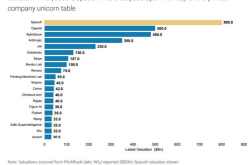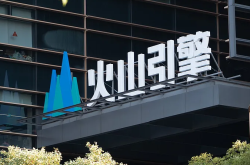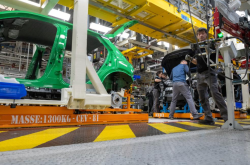The Launch of the Intelligent Storage Capacity Scheduling Platform: Dawn of the 'Intelligent Scheduling' Era for AI Storage
![]() 07/30 2025
07/30 2025
![]() 622
622
In recent years, the rapid evolution of AI technology has led to heightened emphasis on AI by both nations and enterprises. In 2022, China proactively embarked on the 'East Data to West Computation' strategy.
On the highways of 'East Data to West Computation', the flow is no longer traditional electricity but millisecond-scale AI data streams.
The Emergence of the Intelligent Storage Capacity Platform
On the morning of July 26, the 2025 World Artificial Intelligence Conference (WAIC), a prestigious annual global AI industry event, commenced at the Shanghai World Expo Center.
On the afternoon of July 27, at the WAIC 2025 Smart Trends Forum held at the Shanghai Qiantan Shangri-La Hotel, China Mobile announced the deployment of the world's first globally unified file storage product, capturing significant industry attention. This not only signifies the official launch of China's first intelligent storage capacity cross-domain scheduling platform but also provides a foundation for cross-domain collaborative storage capacity essential for AI large model training, inference, generation, and other scenarios, leveraging the 'globally unified file storage system's' core capabilities.
As a pivotal supporting platform for the 'East Data to West Computation' strategy, the Intelligent Storage Capacity Scheduling Platform not only ensures full autonomy and controllability of the entire solution but is also compatible with eight global AI chips, significantly contributing to supply chain security and fostering high-quality development of the national digital economy. To date, the platform has pioneered coverage of the four major national hub nodes in the Yangtze River Delta, Chengdu-Chongqing, Inner Mongolia, and Guizhou, encompassing seven storage capacity resource pools spanning from east to west and connecting north to south.

Breaking the Impasse with Three Core Capabilities
'Incomplete, disorganized, and inefficient data usage are the three primary hurdles in the AI era.' During a media session at WAIC, He Zhen, President of Sugon Storage, directly highlighted the main pain points impeding the implementation of current AI applications. Traditional data centers create data islands due to fragmented and incompatible systems from different vendors, while the mixed storage of AI hot and cold data leads to escalating costs and severe delays in cross-domain data invocation, becoming the 'last mile' obstacle for AI technology implementation. Sugon Storage supports China Mobile in constructing the Intelligent Storage Capacity Scheduling Platform, thereby addressing these issues.
The solution offered by Sugon Storage is a potent 'combination punch' with three core capabilities:
1. Dynamic Resource Allocation: By implementing a data tiering management strategy that places hot data closer to computing power centers and stores cold data in lower-cost western regions, Sugon Storage achieves comprehensive optimization of energy consumption and costs, substantially reducing the overall costs of data centers.
2. Heterogeneous Resource Integration: Sugon Storage has developed a unified management interface on the storage capacity platform that seamlessly interfaces with storage systems from various vendors, enabling data interoperability and significantly enhancing data center operation and maintenance efficiency.
3. Cross-domain Seamless Acceleration: From chip-level 'Super Tunnel' acceleration technology to system-level hot and cold layered scheduling, Sugon Storage accelerates data at both the application layer and the entire storage system, reducing cross-domain data access latency to milliseconds, making it imperceptible to users that data is actually traversing domains thousands of miles away.
Technological Breakthroughs Yield Accumulated Strength
Readers familiar with the storage sector are well aware of Sugon Storage's recent technological surge. Its distributed file system set records with a 190GB/s bandwidth and 5 million IOPS in performance tests, surpassing international counterparts.
Behind this achievement lies Sugon Storage's comprehensive investment in research and development. He Zhen revealed to the media, 'Our team comprises over 1,000 people, 90% of whom are R&D personnel, and we have continuously updated and iterated our technology.'
Years of persistent effort and in-depth accumulation have culminated in Sugon Storage's accumulated strength. 'Over the past two years, we have made strides, whether in product performance or breakthroughs in application scenarios. The fundamental reason is that our accumulated technological prowess has reached a critical level, highlighting our advantages and forging our own technological moat,' said He Zhen.
Storage Capacity Optimization Promotes AI Adoption
As everyone knows, the high costs of building and operating computing power centers are the primary obstacle to AI adoption by many small and medium-sized enterprises. Zhang Xinfeng pointed out that before 2024, the construction costs for large model training platforms ranged from hundreds of millions to even billions of yuan, deterring many enterprises. However, the emergence of DeepSeek in 2024 significantly lowered the threshold for AI application, shifting industry focus from high-intensity training to inference deployment, substantially reducing the demand for computing and storage capacity, and providing development opportunities for domestic GPU manufacturers.
Zhang Xinfeng stated that the core cost bottleneck impeding the popularization of AI computing power has shifted from computing power limitations during the training phase to how to efficiently utilize existing resources. Sugon Storage addresses this challenge through two major technological innovations: first, by enhancing GPU resource utilization, developing GDS technology to enable direct data transmission from storage to GPU without CPU and memory involvement, significantly shortening the data path and improving processing efficiency; second, by optimizing industry data utilization, employing vector databases to store high-quality industry data, accelerating inference and training processes, and enhancing user experience and answer relevance.
Estimates suggest that for every 1 yuan invested in storage capacity, users can save 10 yuan in computing power costs, supported by a complete computing link. With the proliferation of big data inference applications, Sugon Storage is committed to achieving 'data equity' and 'AI popularization', enabling more enterprises to enjoy the benefits of AI technology at lower costs and fostering the penetration of the AI industry into a broader range of fields.
Storage Solutions for Future AI
When asked about the capabilities that storage solutions for future AI should possess, Yang Zhilei, Vice President of Sugon Storage, emphasized that with the rapid development of AI technology, future storage systems will require a higher level of intelligence and exceptional performance.
Yang Zhilei stated that the intelligence of storage systems will be paramount. Traditional storage systems necessitate manual parameter adjustment and configuration for different application scenarios, whereas future storage systems should be capable of automatically sensing business pressure, IO characteristics, and data flow patterns, autonomously selecting the optimal configuration, minimizing manual intervention, and enhancing user experience. Sugon Storage is dedicated to developing such adaptive storage systems to meet the efficient operation requirements of diverse scenarios.
Simultaneously, Yang Zhilei also underscored the central role of performance in AI storage. Amidst the intense pursuit of computing power by domestic and international AI chip manufacturers, storage systems must ensure that data can be continuously and efficiently supplied to GPU cards, avoiding becoming a bottleneck for computing power. Sugon Storage is ensuring that the storage platform can support high-intensity AI training and inference tasks by enhancing key indicators such as IOPS and bandwidth, thereby facilitating the rapid development of AI technology.
Additionally, Yang Zhilei mentioned the importance of storage security and data partitioning, stating that Sugon Storage will continue to optimize its products to provide users with safer and more reliable storage solutions.
Conclusion
As AI and data become integral production factors in the digital economy, the Intelligent Storage Capacity Scheduling Platform is emerging as the cornerstone of China's high-quality digital economic development. On this challenging path, Sugon Storage's exploration holds undeniable milestone significance.
The Intelligent Storage Capacity Scheduling Platform is heralding a new era. From resolving 'data islands' to reconstructing AI infrastructure, from empowering 'East Data to West Computation' to defining storage capacity standards, this technology enterprise, steadfast in full-stack independent research and development, is penning a new chapter in China's storage industry with technological innovation.
While overseas countries focus on the arms race for computing power, China has chosen a differentiated path—using the 'East Data to West Computation' strategy as the bow and intelligent scheduling technology as the arrow to pierce through the barriers to data element flow. With a large-scale cluster of 100,000 cards poised for launch, a new AI competition defined by storage capacity is quietly rewriting traditional rules.






